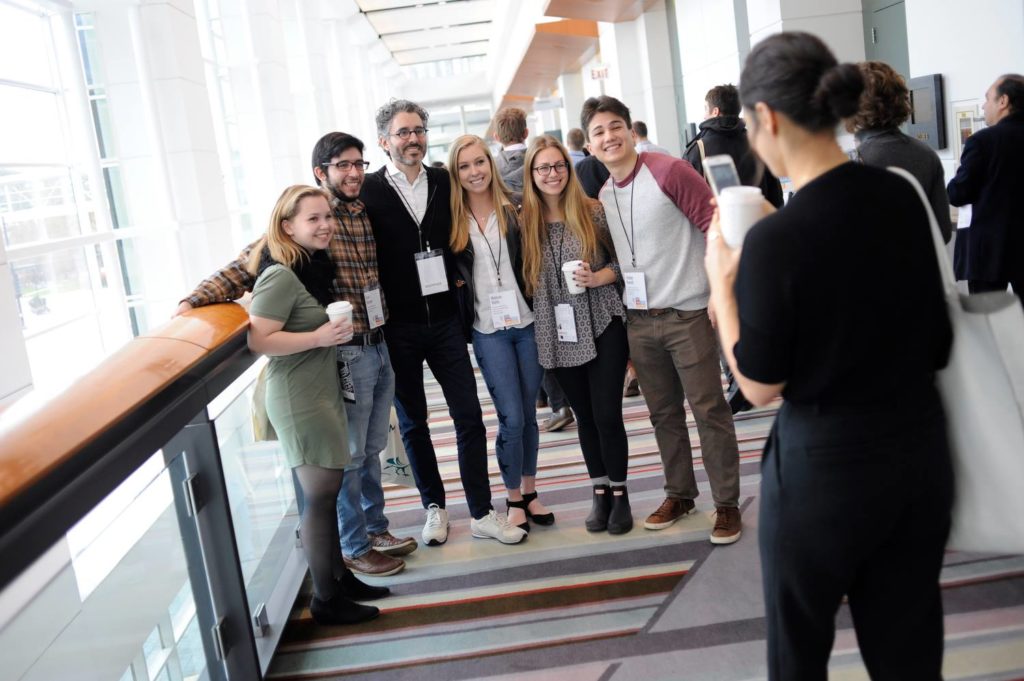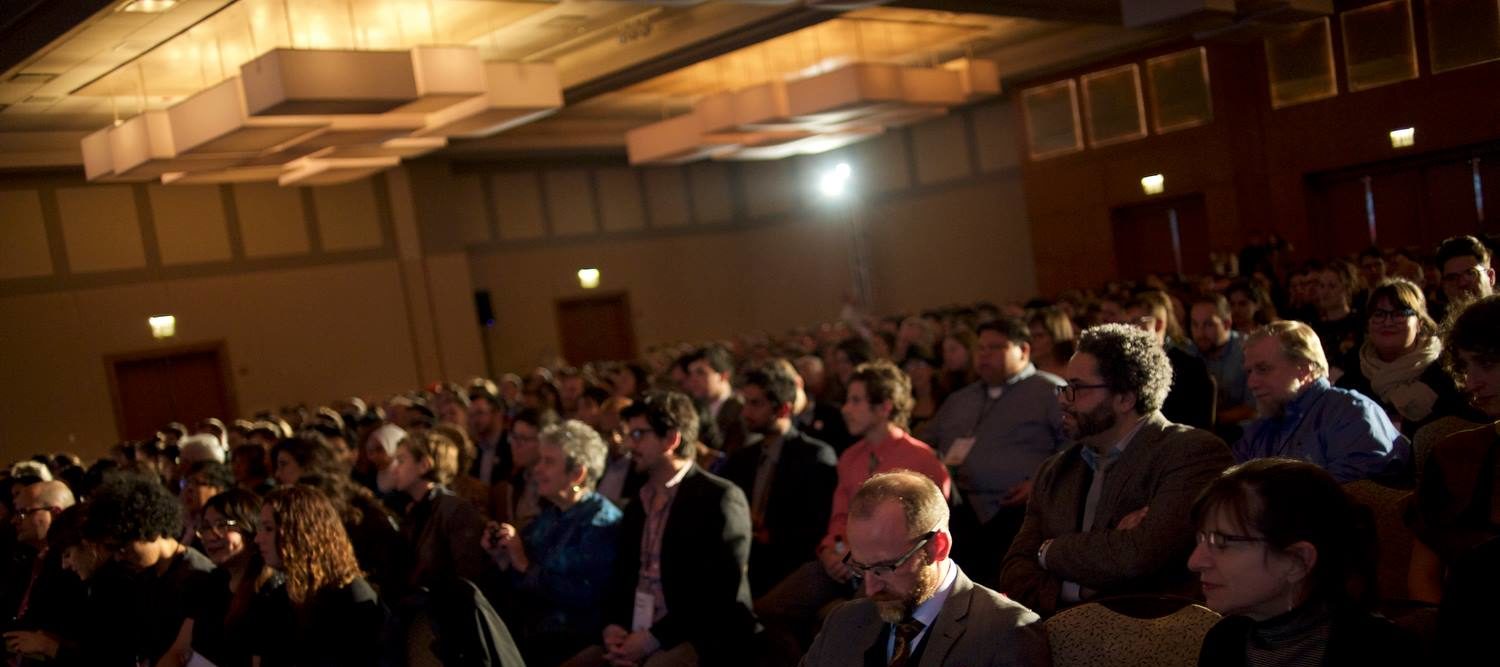Last month I had the great fortune of attending the 2017 Third Coast Conference, put on by the Third Coast International Audio Festival. Though it was only my second year in attendance, I already feel an unabashed love for Third Coast and all that they have done for the furtherance of narrative audio storytelling. Following their work over the years has only served to make me that much more of a perceptive listener to, and observer of, the world of audio. In this present moment, adopting a bird’s eye perspective of the podcast landscape reveals the Third Coast organization and conference’s indelible fingerprints on this century’s communal listening experiences. From Re:Sound, to Radiotopia, many of audio’s major players can credit the organization as having been integral in their growth. That its rise in prominence has coincided with that of the podcast medium is largely by design and not mere coincidence.
The organization’s now-annual Third Coast Conference is a legendarily special place for those in the radio and podcasting world. Held in Chicago since its inception in 2001, the conference has made that city feel sort of like the very center of the audio universe. What makes Third Coast such a gem in the field—beyond its lengthy tenure and stacked roster of presenters—is the overall atmosphere of conviviality. It has an air of a reunion or returning to summer camp, the faces of attendees plastered with fervent grins brought on by unspoken connection. For practitioners of this most intimate of art forms, the creative process can sometimes be a solitary endeavor, making the communal nature of the conference all the more important.
It all reminded me of an anecdote about Steve Jobs. When advising Pixar on the development of their headquarters, Jobs opined for a wide open atrium to be situated between all of the offices. This would foster “unintended collaboration” as he put it. Chance encounters with co-workers could often unlock new solutions to issues that the animators might be having through momentary inspiration. The conference acts very much in that Jobsian manner then, offering a generous physical space for serendipitous connections to occur and hopefully bear fruit.
Those benefits are secondary, however, as the main focus of the conference are its breakout sessions where the medium’s best practitioners share the secrets of their success. These ranged from Sook-Yin Lee—of the delightful Sleepover—talking about abstract performance art as an inspiration for interviewing, to Christopher Swetala detailing the intense level of fact checking behind every story on This American Life. Every presenter is someone who has spent years honing their craft, and their expertise shows. Even attending as a critic was extremely helpful, in that it aided in sharpening my critical acumen, showed me what to look out for in a program, and provided important historical context. As an aside, that last bit is one of the areas where Third Coast really excels. Podcasting is too often dismissive of the medium’s past, but they curate an important archive of excellent audio from the past two decades. It is one of my aims with Constant Listener that we may be able to better educate listeners on what has influenced our present soundscape.
At one such session, hosted by Lisa Tobin and Michael Barbaro from The New York Times’ immensely popular The Daily podcast, Ira Glass was seen taking page after page of notes. The image was at once comical and awe-inspiring, as it displayed in Glass an unmistakable drive for perfection. Even now, some 20 years into TAL it is great to see that there is no room for complacency.

While Glass’ presence at The Daily‘s talk was earnestly scholastic, it also served to tacitly cement that show’s status as the runaway hit of the year. Like Anna Wintour sitting front row at a designer’s Fashion Week catwalk, this was as much about seeing as being seen. In a densely packed year of shows and stories, Barbaro is easily this year’s most celebrated podcast personality, and with good reason. While I have a lot of thoughts on daily news podcasts, I can’t argue with the idea that Barbaro has set himself ahead of the pack in terms of his on mic presence and superior interviews. The level of hushed reverence that met him wherever he went was really striking to witness. To have only begun making as show this year and already had such an impact is something few achieve as quickly or as spectacularly. Barbaro was even game enough to deliver the morning announcements in the style of a segment from the show, and it was a moment so pure that I’ll admit to welling up slightly.

Perhaps though, the most telling moment of the conference came during a rather innocuous interaction. It only took a second, but it has colored the way I have been looking back at the festival. During a break between sessions, one conference-goer remarked quizzically to me, “Press?” after espying it on my badge. “How does that work? Aren’t we all press here?” It was such a curious thought. For a conference aimed at representing the entirety of radio and podcasting as an artistic medium, it can be hard for Third Coast to shake its journalistic roots, for better and for worse.
It is all a little difficult to consider objectively. As I’ve said before, I love Third Coast and the organization does immense good for the podcast medium, whether it be the conference, their radio residency, or their mission of raising the public profile of audio art. But I sometimes wonder if its aim is too prescriptive or narrow. Because of their public radio roots, the audio documentary format is the ostensible gold standard at Third Coast. I am not here to debate the immense power that is found in those kinds of productions, they are quite literally what got me into podcasts. I just bristle somewhat at the notions toward homogeneity, particularly that the highest aim in podcasting is to become a documentarian.
It would appear that Third Coast is at a bit of a crossroads. Originally the conference focused on the world of public radio, but it has come to represent the beating heart of the podcast medium. For a large section of listeners, the two are inextricably linked, as early adoption of the form came through shows like This American Life and Fresh Air. To many, there is no real difference, a podcast is simply DVR’d radio. But the important differences which set the two apart come through experimentation, flexibility, more auteurist sensibilities towards construction and audiocraft, as well as increased representation of marginalized voices.
To that last point, for all of the work being done to increase diversity within the worlds of radio and podcasting, there are a still dismissive attitudes toward the large swaths of work being made by PoC creators who don’t come from the same public radio background. For the past two years however, Third Coast has run their Radio Residency program, focused specifically on assisting producers from under-represented populations in the field. It just seems to be tailored toward molding participants in a sort of public radio house style, rather than reflective of the kinds of shows that are really having an impact within their own communities. During the conference’s opening night provocations segment, speakers Martina Castro and Sarah Alvarez each outlined different ways that public radio often misses communicating with the people it profiles, whether due to language barriers or audience myopia. The feeling that I got over my time there was that, while the right questions are being asked, there is still a culture of exclusivity which pervades public media and Third Coast is not entirely immune from it as well.
The organization is still working in the right direction overall, bringing roughly 800 audio practitioners together to connect, inspire and challenge. The conference is undoubtedly making a difference in the lives of its attendees—even those who can’t, as they offer sessions available for free in podcast form after the fact. But as with any art form, there are multiple schools of thought about what makes for a triumphant creation and there is no objective right or wrong. So, no, not everyone at Third Coast is press. The podcast landscape is dotted with hobbyists, comedians, diarists, interviewers, and so many more whose work deserves recognition. Hopefully they choose to come to Third Coast in 2018 and help to stretch the understanding of who is a podcast creator, and what they can achieve through this beautifully vibrant medium.

